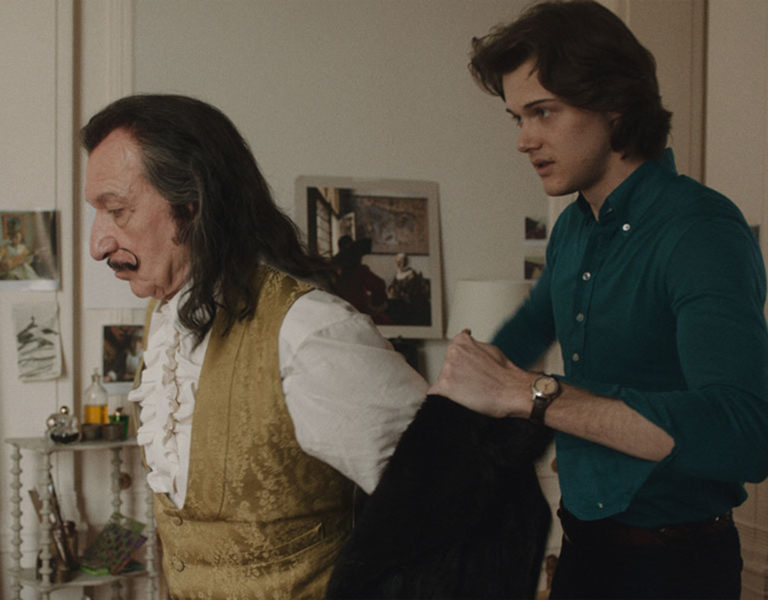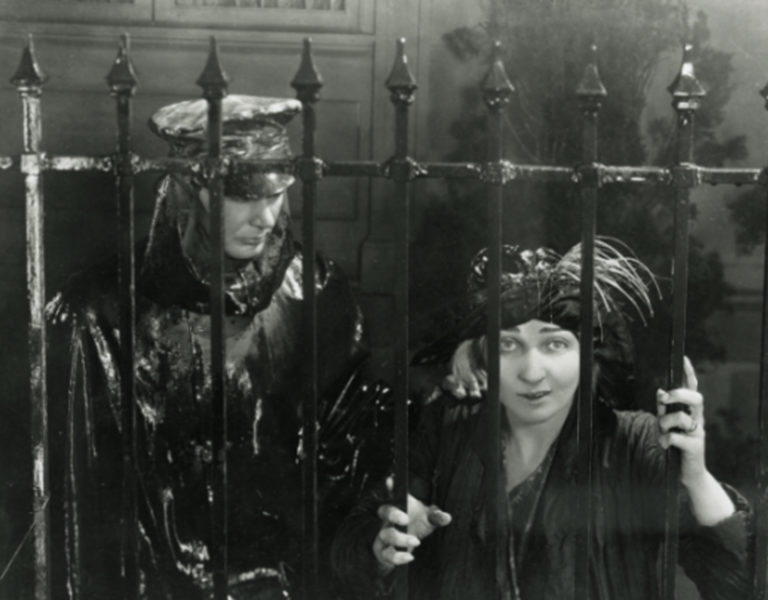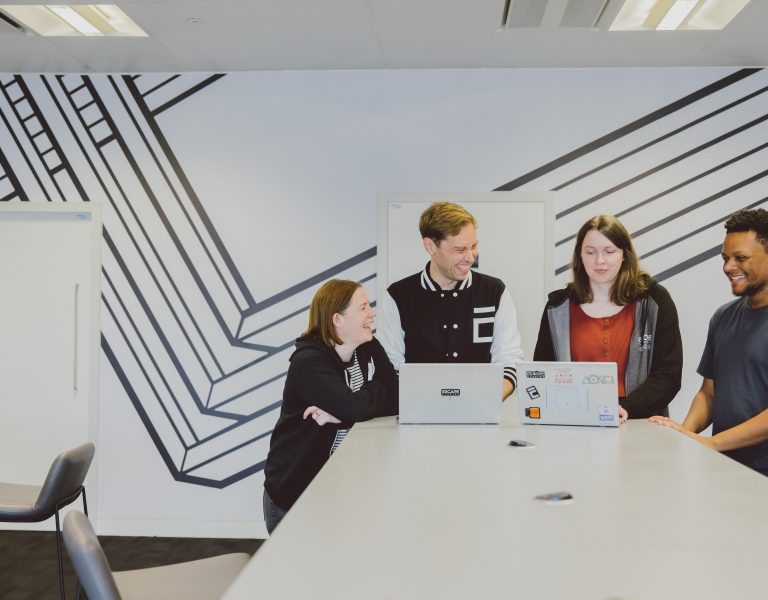Linda Wu was tasked with bringing a tender tale of care home residents to the screen in her National Film and Television School (NFTS) graduate film. Find out how she tackled the challenges of shooting underwater, including a complicated drowning sequence, and why shooting on film was the best way to visually translate a sense of the fragility of life.
Jellyfish & Lobster is about two residents in a care home who discover a magical swimming pool, get a new lease of life and form an unlikely relationship while coming to terms with their inevitable end.

British Cinematographer: What were your initial discussions about the visual approach for the film? What look and mood were you trying to achieve?
Linda Wu: The film is based on writer/director Yasmin Afifi’s personal experience of loss. We wanted to shy away from typical portrayals of grief and develop our own visual language that focused on showing Grace as the strong woman she is.
Grace doesn’t want to be pitied. She puts on a sarcastic, cheeky facade to hide her fears. We felt an objective and naturalistic camera was best way to show Grace’s reality.
Throughout the film Grace tends to keep people at arms length and rarely lets her vulnerability show. I stuck mostly to wide lenses, keeping us at a distance and out of Grace’s eye-line, choosing to only get a little longer for the more intimate moments when Grace’s veneer cracks.
Meanwhile for the pool we went for a more stylised approach, opting for a subjective, handheld camera. The pool has its own journey: it starts off as this place of elation and discovery before becoming this sombre place that holds Grace captive. At the start the camera is more fluid and floaty, as Grace and Mido delight at their discovery. Over time the pool’s hold on Grace starts to grow more nefarious, and in the climax we launched into a more chaotic approach to express the hold the pool has over her.
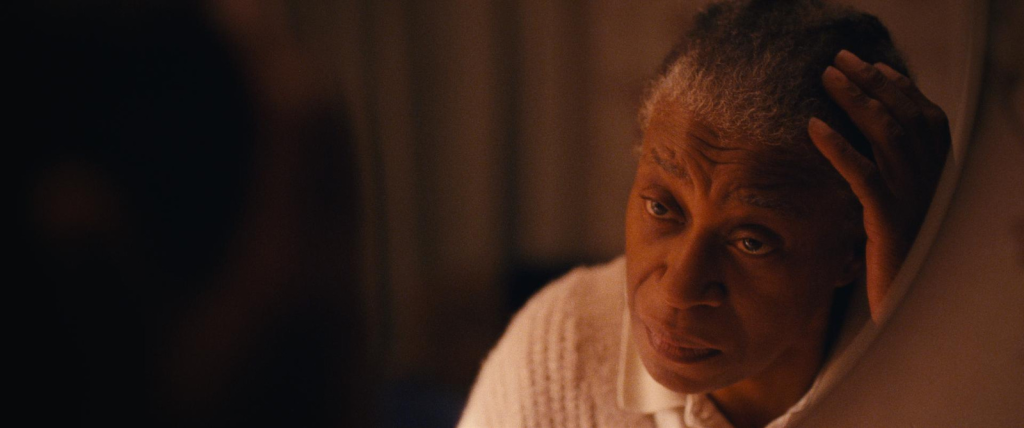
BC: What were your creative references and inspirations? Which films, still photography or paintings were you influenced by?
LW: Most of our references were photographs. We looked at “Uncommon Places” by Stephen Shore, “Portraits” by William Eggleston, and “Intimate Distance” by Todd Hido. The common theme of these books is the way their images capture the implied history of people and spaces.
Everyday life takes on a new sense of wonder in Shore’s photographs and that is what we set out to capture in the care home. Eggleston’s multi-layered portraits, specifically of elderly people, are beautiful and melancholic at the same time. These became references for how I wanted to capture Grace. I wanted to show her as she is, whilst hinting at all these layers underneath.
Hido’s photos of once inhabited interiors became the starting point for how we thought of the care home. We wanted to impart a sense of history to the location and make the audience wonder about all the other people that had come and gone through its corridors.
BC: What filming locations were used? Were any sets constructed? Did any of the locations present any challenges?
LW: We filmed in three different locations: an indoor pool, an abandoned care home, and the beach in Brighton.
Apart from the physical challenges of shooting underwater, one of the things that made the pool so challenging were the windows that surrounded it. We wanted to obscure what was outside the pool, as if the magical location defied space and time, but I still needed to be able to light through the windows. Our production designer Gili Ofri created beautiful stained glass window treatments that obscured the outside but still allowed light in.
The abandoned care home became a blank canvas for us to create a subdued, lived-in atmosphere like our Hido references. Gili and I worked together, testing various colour palettes to achieve this look.
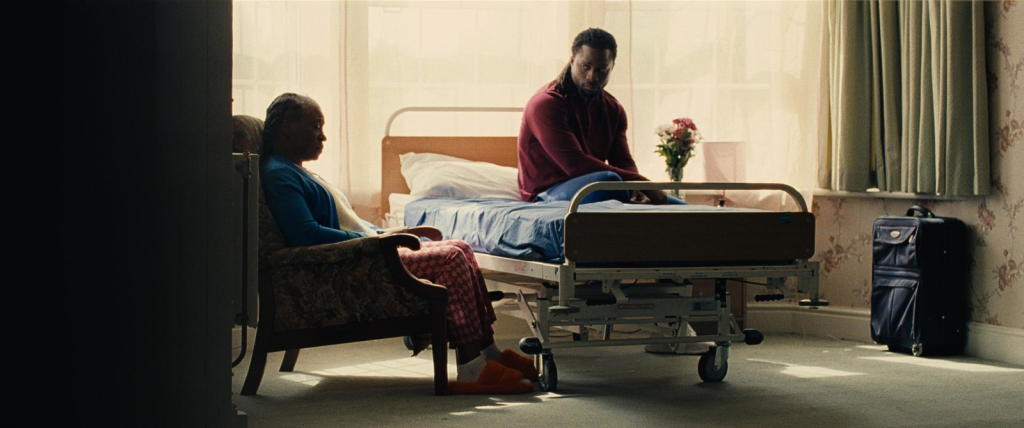
BC: Can you explain your choice of camera and lenses? What made them suitable for this production and the look you were trying to achieve?
LW: Yasmin talked about how the film, at its core, is about two characters running out of time, forced to live what remains of their life with a sense of urgency and how the format of film was the best way to translate this visually.
Given our photographic references I agreed that 35mm was the best format, as I wanted to embed this film with the intimacy, nostalgia, and melancholy that is present in these references.
The sharp, clean, contrasty images that ARRI Master Primes capture are gorgeous and paired well with film. I thought they would be the best lenses to capture the characterful faces of our cast as the sharpness allows the lenses the capture everything as it is, without any kind of fabricated sheen.
Thank you to ARRI Rental, who supplied a full set of Master primes with every focal length imaginable.
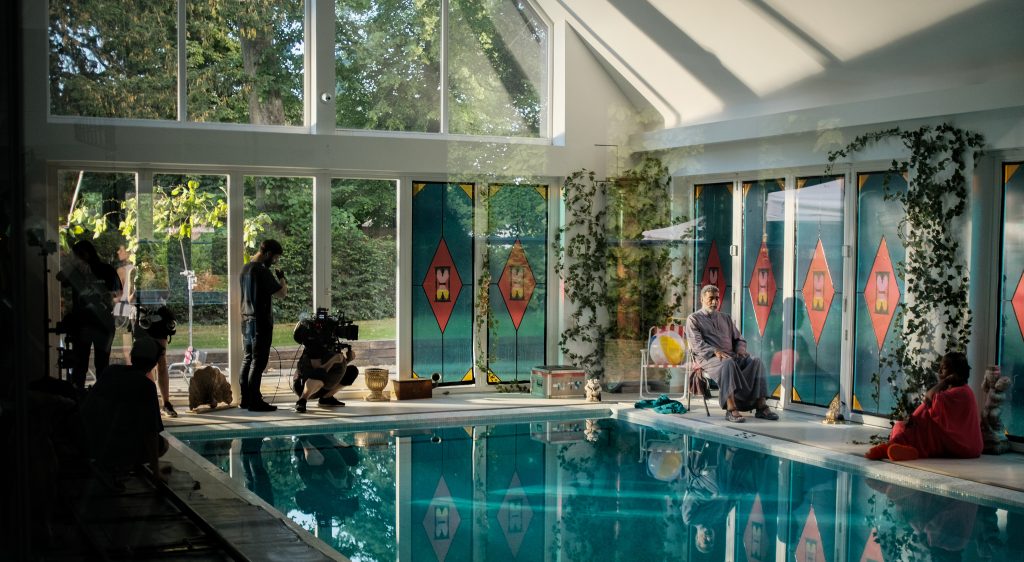
BC: What was your approach to lighting the film? Which was the most difficult scene to light?
LW: I tend to focus on lighting the space, so often on recces I’m observing how natural light interacts with the location. Those observations inform my lighting choices when it comes to the shoot.
The care home had fantastic natural light, so most of the lighting was focused around supplementing and shaping that. I utilised a lot of negative fill, both in the wide shots and the closeups. We would often have large solids just behind camera and overhead on the ceilings to create more contrast in the room. LEDs were our go to when we moved in closer. We would often bring in an Aladdin with an egg-crate as a window wrap. I generally prefer simple, effective lighting to give the actors the space they need.
The hardest scenes to light were around the pool. I remember seeing the pool for the first time and thinking “what am I going to do…” The ceilings were so tall, and there were absolutely no overheard rigging points, nor did we have the time to put anything in place. On top of that, it was surrounded by windows, all of which were south facing.
Thankfully Jakub Paczos, my gaffer, had a plan. We had a 9k HMI par and a 6k HMI fresnel going through a window that was just out of frame, acting as the “sun” and directional ambience. Jakub and I worked with our fantastic 1st AD Daniel Pachalski to schedule around the sun’s path, as that was the only way we could make our lighting work.
A huge thanks to Panalux for the lighting, we couldn’t have lit the pool without the 9ks, 6ks, and 4ks HMIs they supplied. Safe to say, that pool was sweltering!

BC: What were you trying to achieve in the grade?
LW: Our intention from the beginning was to try and preserve the inherent colour palette and look of the film stock. Vanessa Aparicio, our colourist, and I worked on setting this look for the dailies, and that served as our starting point going into the grade, which gave us time to focus on the details.
Vanessa beautifully brought out the rich complexity of colour you get from shooting film stock, something that I wanted to highlight.
We also did some pickups on digital and I was worried about it matching, but Vanessa absolutely nailed the film emulation for those bits. We spent a fair bit of time in the grade going back and forth between the film footage and Alexa footage, talking about the differences. I learned a lot about what makes film special and different from digital.
BC: What were the most challenging parts of the film to shoot and how did you overcome those obstacles?
LW: We had one day to get all the underwater shots and work out a complicated drowning sequence, and we couldn’t have done it without the help of Genevieve Reyes, our underwater operator for the day. Gen walked the actors and I through the process of shooting underwater, helping us work out a workflow so that Yasmin, who was outside of the pool and didn’t have a director’s monitor, could still direct the actors. Also with Jakub, my gaffer, we managed to create several different lighting looks underwater with just the careful placement of the 9k and 6k HMIs.
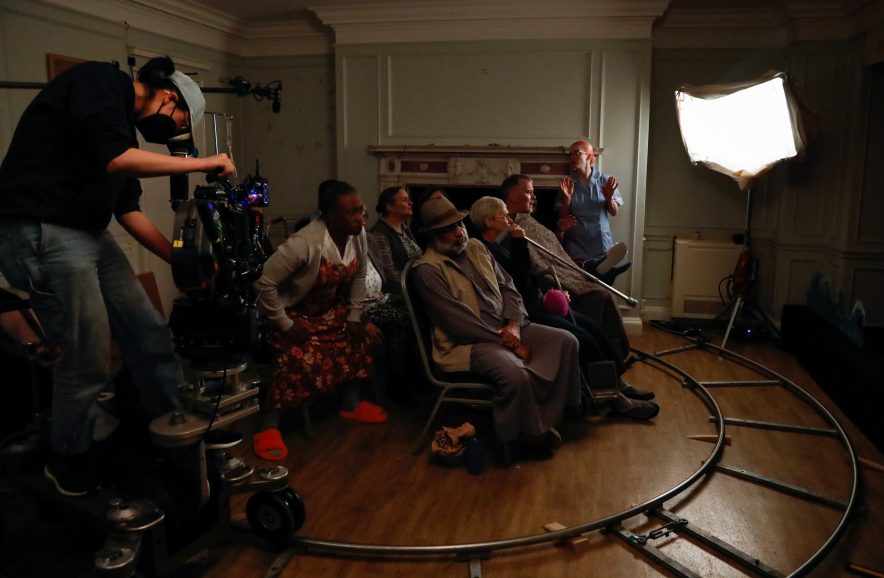
BC: What was your proudest moment from the production process? Is there a specific scene or shot that you’re especially proud of?
LW: Shooting around water, in a summer heatwave is not easy. I want to thank the camera department: Gemma Mancinelli (1st AC), Ben Hart (2nd AC), and Tania Garcia (loader). They were brilliant and I’m so proud of how we all came together as a team to pull off all that we did in that location.
BC: What lessons did you learn from this production that you’ll take with you onto future productions?
LW: I learned that your crew is your biggest asset on a film. They are the unsung heroes and without them there is no film. This was a hard shoot at times, but my crew got me through it and I couldn’t have done it without them.
BC: What would be your dream project as a cinematographer?
LW: I would especially love to tell stories that reflect my background. I’m what would be termed as a “third culture kid”. I’m Chinese but I grew up in America, and never really quite fit into either culture. Growing up, I wish I had seen more stories about that experience because I think that would have helped me understand what I was going through.

